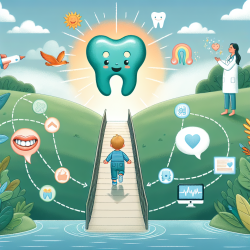Introduction
As practitioners dedicated to enhancing children's health, it's crucial to rely on evidence-based practices. A recent study titled "Multidisciplinary Evaluation of Pacifier Removal on Oro-Dentofacial Structures: A Controlled Clinical Trial" provides valuable insights into the effects of pacifier removal on children's orofacial development and speech functions. This research underscores the importance of early intervention and offers practical strategies to improve outcomes for children.
The Study at a Glance
The study involved 60 preschool children, divided into a pacifier group and a control group. Over 12 months, researchers assessed changes in dental arch dimensions, bite force, lip pressure, and speech functions. The findings revealed significant improvements in the pacifier group, highlighting the benefits of pacifier removal.
Key Findings
- Improved Dental Health: The study found a decrease in malocclusion frequency and improvements in maxillary and mandibular intercanine widths after pacifier removal.
- Enhanced Speech Functions: Speech distortions were more frequent in the pacifier group at baseline but decreased significantly over time, indicating that removing the pacifier can lead to better speech outcomes.
- Better Breathing Patterns: Breathing scores improved in the pacifier group, aligning with the control group by the end of the study.
Practical Implications for Practitioners
For practitioners, these findings offer actionable insights:
- Encourage Early Pacifier Removal: Advocate for the cessation of pacifier use by age three to prevent dental and speech issues.
- Implement Positive Reinforcement Strategies: Use methods like clarification and positive reinforcement to support parents in pacifier removal.
- Monitor Orofacial Development: Regularly assess children's orofacial structures and functions to identify and address potential issues early.
Encouraging Further Research
While this study provides valuable insights, it also opens the door for further research. Future studies could explore long-term effects of pacifier removal and the impact on various age groups and populations. Such research will continue to refine our understanding and improve interventions.
Conclusion
The removal of pacifiers not only supports healthier dental development but also enhances speech and breathing functions. By integrating these findings into practice, practitioners can significantly impact children's health outcomes. For a more in-depth understanding, I encourage you to read the original research paper: Multidisciplinary Evaluation of Pacifier Removal on Oro-Dentofacial Structures: A Controlled Clinical Trial.










